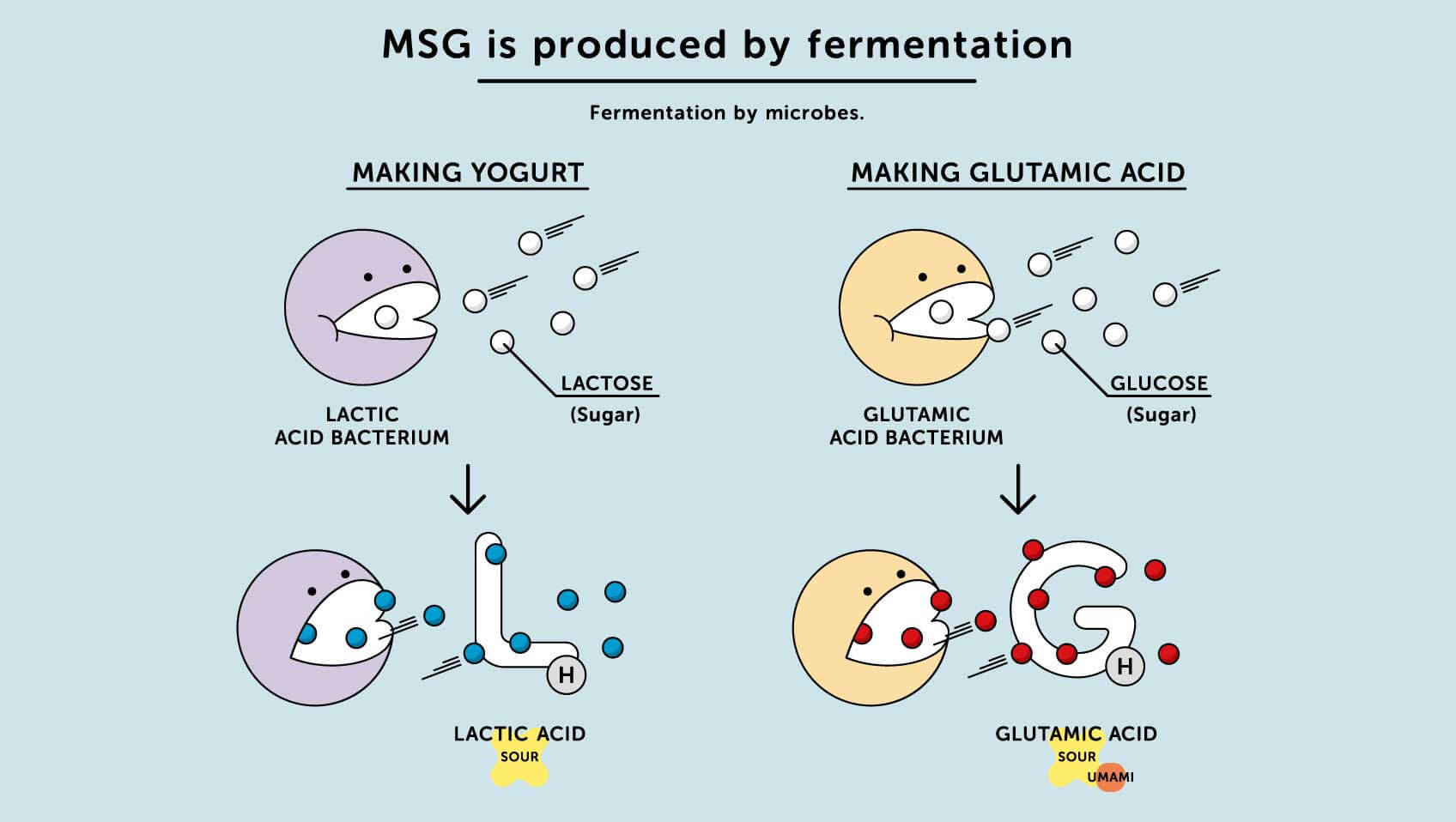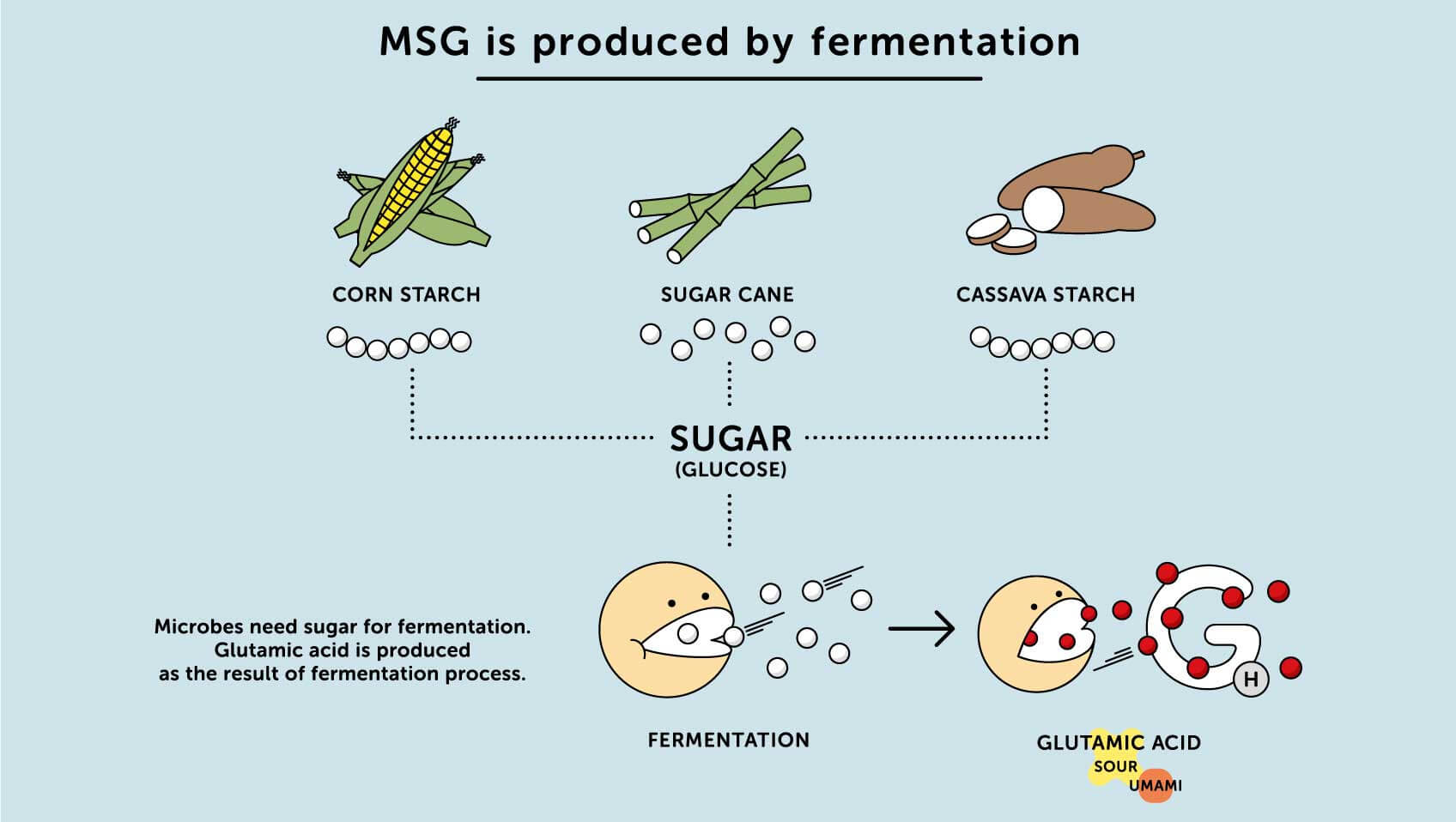Exploring Monosodium Glutamate
Posted by Stelios on 4th Mar 2023 Reading Time:
WHAT IS MONOSODIUM GLUTAMATE?
Monosodium glutamate (MSG) is a popular seasoning and flavour enhancer. It is the purest form of umami, the fifth taste sensation. Monosodium glutamate is widely used to amplify and enhance umami flavours in sauces, broths, stocks, soups, coatings and many more foods.

Image source: Ajinomoto Co., Inc.
Umami and monosodium glutamate are two sides of the same coin; they give us the same taste experience as glutamate. The glutamate in monosodium glutamate is chemically indistinguishable from the glutamate in animal and plant proteins. Human bodies metabolise both sources of glutamate in the same way. Think of salt and saltiness. Many foods taste salty, but a pinch of salt on your tongue gives you the purest taste of saltiness. When you eat monosodium glutamate, it triggers only one taste sensation–umami.
WHAT IS MONOSODIUM GLUTAMATE MADE OF?
Today, monosodium glutamate is produced by fermentation of plant-based ingredients such as sugar cane, sugar beets, cassava or corn. Monosodium glutamate is the sodium salt of glutamic acid, one of the most common naturally occurring amino acids.

Image source: Ajinomoto Co., Inc.
Glutamic acid is abundant in our bodies and found in many foods we eat daily, including meat, fish, eggs and dairy products, as well as tomatoes, corn and nuts. When a protein containing glutamic acid is broken down through fermentation, it becomes glutamate. Glutamate activates our taste receptors, eliciting the delicious savoury taste known as umami.
HOW DOES THE FERMENTATION PROCESS WORK?
Fermentation has been used by humans for centuries as a way to preserve foods and enhance their taste. Monosodium glutamate is made of naturally occurring substances through a modern version of that process, with the help of microbes that transform feedstocks like sugarcane into food products. First, the sugarcane is extracted as glucose and sent to a fermentation tank, to which fermentative microbes are added.

Image source: Ajinomoto Co., Inc.
These microbes consume glucose, releasing glutamic acid. Which though neutralisation, is turned into a solution that contains monosodium glutamate. This solution is then decolourised and filtered, resulting in a pure monosodium glutamate solution. This refined solution is crystallised using an evaporator, and the crystals are dried to produce the final product—monosodium glutamate.

Image source: Ajinomoto Co., Inc.
The process has a minimal environmental footprint, as its co-products can be returned to the soil as fertiliser to help grow crops like sugarcane, forming a virtuous cycle.
WHAT PEOPLE SAY ABOUT MONOSODIUM GLUTAMATE
Harold McGee, Author of On Food and Cooking: The Science and Lore of the Kitchen
David Chang, Restaurateur, author, podcaster and television personality.
SOURCES
Why Asians Know MSG Isn’t Really Bad For You
If MSG is so bad for you, why doesn't everyone in Asia have a headache?
MSG in Chinese food isn’t unhealthy – you’re just racist, activists say
Is MSG as bad as it’s made out to be?

